Looking for a clear peppers heat chart? This guide provides a comprehensive Scoville scale comparison of common chili peppers, from bell peppers to Carolina Reaper, with detailed heat levels, culinary uses, and safety tips. Updated for 2025.
| Pepper | Scoville Heat Units (SHU) | Common Uses |
|---|---|---|
| Bell Pepper | 0 | Sweet crunch in salads, stir-fries, stuffed dishes |
| Jalapeño | 2,500–8,000 | Salsas, nachos, jalapeño poppers |
| Serrano | 10,000–23,000 | Mexican sauces, salsas, soups |
| Cayenne | 30,000–50,000 | Spice blends, hot sauces, seasoning |
| Thai Bird's Eye | 50,000–100,000 | Asian curries, stir-fries, pad Thai |
| Habanero | 100,000–350,000 | Fruit-forward hot sauces, Caribbean dishes |
| Bhut Jolokia (Ghost Pepper) | 1,000,000+ | Challenge eating, extreme hot sauces |
| Carolina Reaper | 1,400,000–2,200,000 | World record holder – use with caution! |
What Is the Scoville Scale?
The Scoville Scale measures pepper heat using Scoville Heat Units (SHU), developed by Wilbur Scoville in 1912. It quantifies capsaicin concentration by determining how much sugar water is needed to neutralize the heat. Modern testing uses High-Performance Liquid Chromatography (HPLC) for precise measurement.
From Mild to Madness: A Breakdown
Bell Pepper – Sweetness Without the Burn
Zero SHU and full of flavor! Bell peppers are colorful, crunchy, and perfect for those who want vegetable satisfaction without any mouth-on-fire moments.

Jalapeño – The Crowd-Pleaser
Found in everything from guacamole to gourmet pizza, the jalapeño hits the "just spicy enough" sweet spot for most people. Smoked jalapeños are called chipotles, adding a whole new layer of flavor.
Serrano – Jalapeño on Steroids
A little hotter than its cousin, serrano peppers are great for salsas and sauces where you want more punch but don't want to scare off your dinner guests.
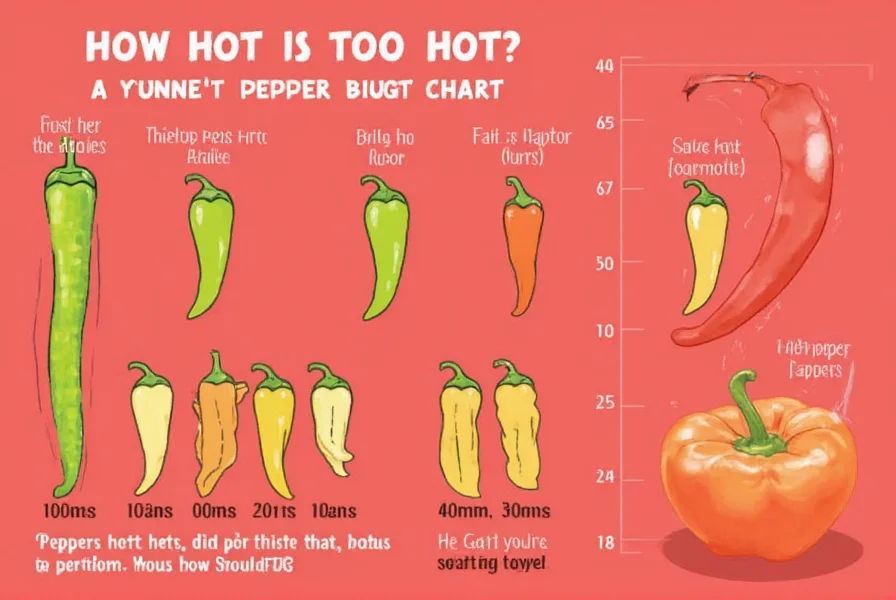
Cayenne – Kitchen Cabinet Staple
Whether dried, powdered, or fresh, cayenne brings medium-level heat and is often found in Cajun and Creole cooking. A little goes a long way!
Thai Bird's Eye – Fiery Flavor Bomb
These tiny red or green bullets pack a punch and are essential in many Southeast Asian cuisines. Just one can elevate a dish from ordinary to explosive.
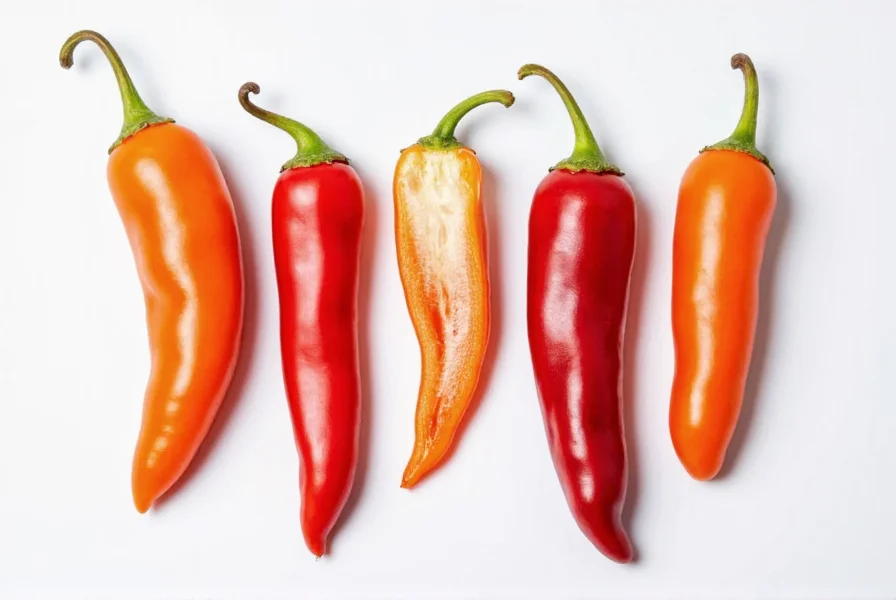
Habanero – Tropical Fire
Known for its fruity aroma and slow-building heat, habanero is a favorite among spice lovers. Perfect for making hot sauce with a twist.
Ghost Pepper – Warning: Not for the Faint of Heart
The ghost pepper (Bhut Jolokia) once held the title of the world's hottest pepper. Its intense heat comes on fast and lingers long. Handle with care.
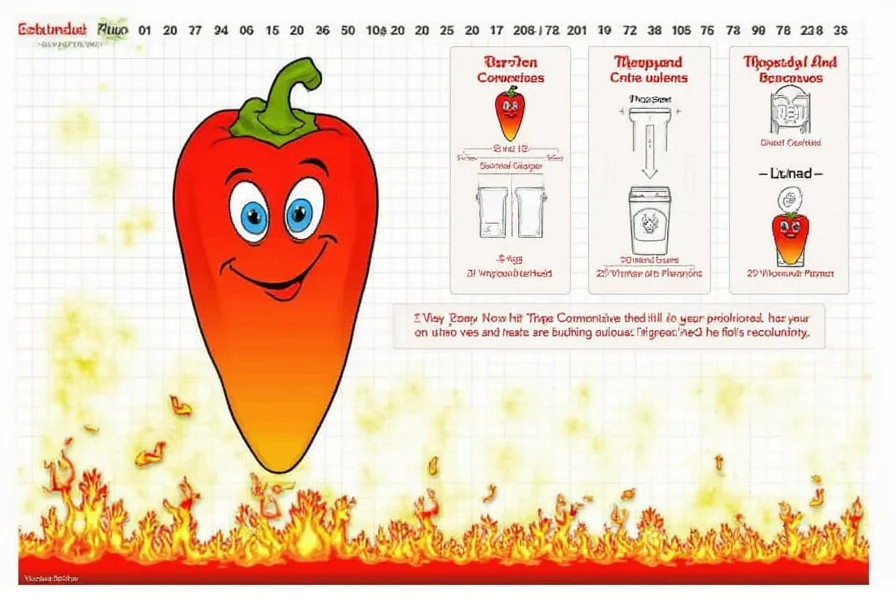
Carolina Reaper – The Beast of All Peppers
Currently holding the crown as the hottest pepper in the world, the Carolina Reaper looks innocent with its bumpy red body, but inside lies pure capsaicin chaos.
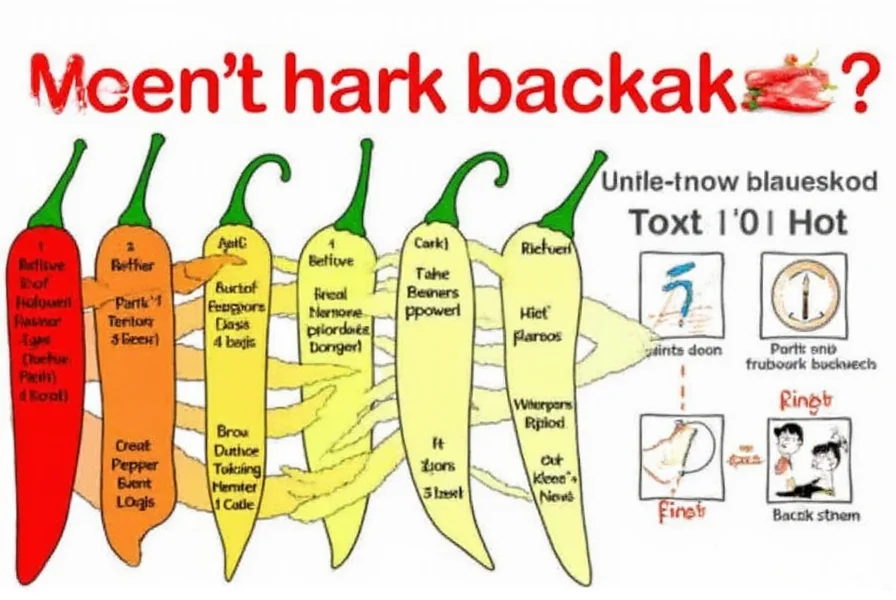
How to Use Hot Peppers in Cooking
Using hot peppers in cooking is part science, part art. Here are a few techniques to make the most out of your spicy ingredients:
- Seed Removal: Most of the heat is in the seeds and inner white ribs. Removing them reduces the overall spiciness.
- Drying: Dried peppers like ancho, pasilla, and guajillo offer complex flavors and are perfect for sauces, stews, and mole.
- Infusing Oils: Infuse olive oil with sliced jalapeños or crushed red pepper flakes for a quick way to add heat to pasta, bread, or dips.
- Fermentation: Fermented hot sauces made with habaneros or ghost peppers bring depth and tanginess along with the burn.
- Grilling: Charred poblanos or Anaheim peppers bring smokiness and moderate heat to tacos and sandwiches.
Tips for Handling Spicy Peppers
Hot peppers might be fun in the mouth, but they're not always fun on the skin. Here are some safety tips when handling fiery chilies:
- Wear gloves. Capsaicin sticks around—and not just on your hands. Gloves prevent accidental eye contact or touching other sensitive areas.
- Avoid plastic cutting boards. Porcelain or glass is easier to clean thoroughly after chopping peppers.
- Rinse tools immediately. Don't wait until later to wash your knife or cutting board—residue dries quickly and spreads easily.
- Milk works better than water. If your mouth is on fire, drink dairy. Milk proteins neutralize capsaicin better than anything else.
- Vinegar helps too. For skin burns, rubbing vinegar on the affected area can help cut through the oily capsaicin residue.
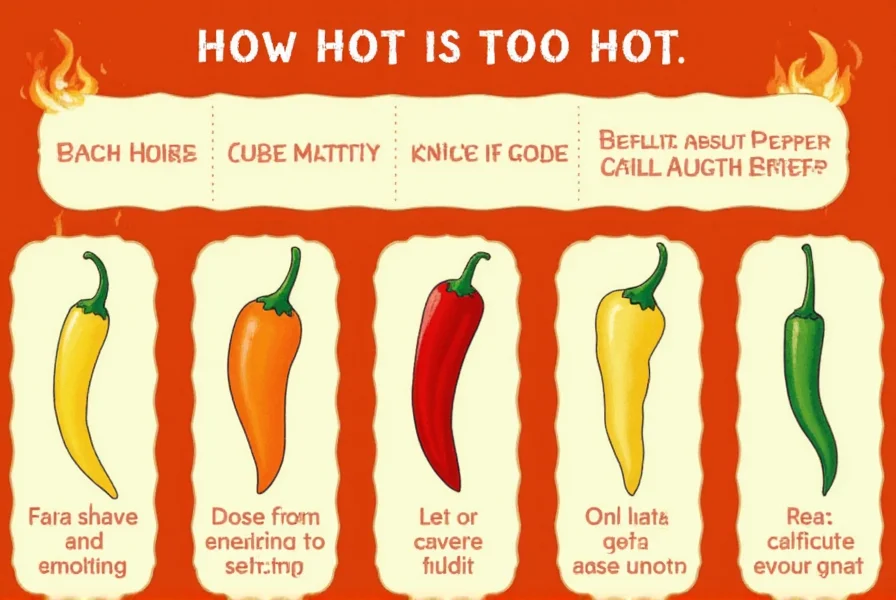
Buying Guide for Chili Peppers
Jalapeño Peppers
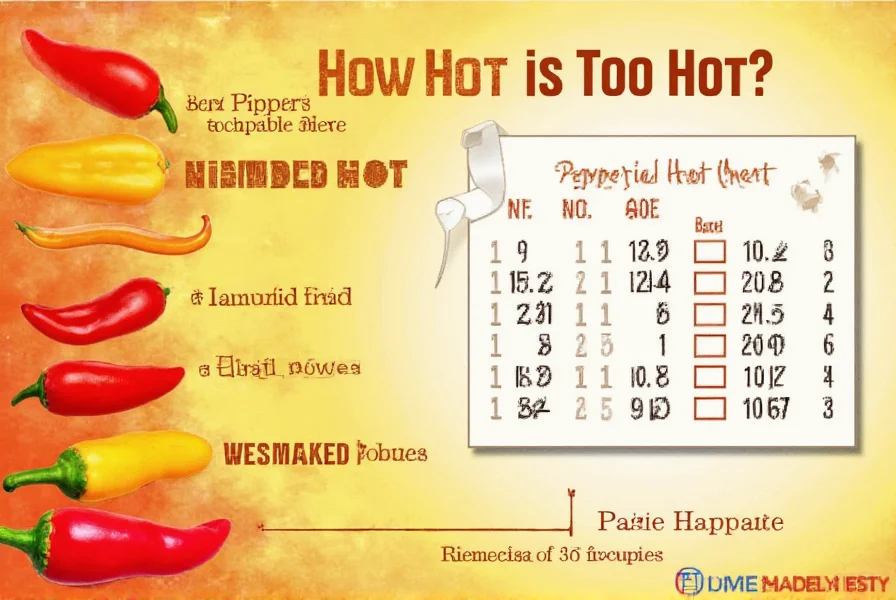
- Features: Firm, shiny skin; no soft spots or wrinkles
- Advantages: Versatile, easy to find, moderate heat
- Use Cases: Salsas, nachos, pickling, grilled snacks
- Target Audience: Home cooks, Mexican food lovers, beginners
- Best Occasion: Casual weeknight meals, potlucks, game day snacks
Ghost Pepper Pods
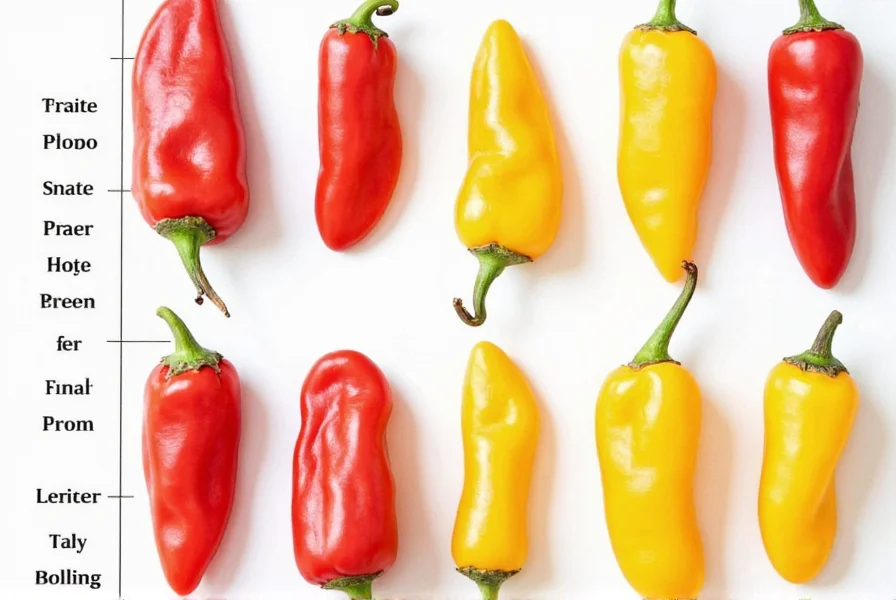
- Features: Bright red pods, dry texture
- Advantages: Extremely high heat, excellent for hot sauces
- Use Cases: Extreme hot sauces, DIY challenge recipes
- Target Audience: Spice hunters, competition eaters, adventurous chefs
- Best Occasion: Spicy cooking challenges, backyard barbecues with friends
Dried Ancho Peppers

- Features: Deep reddish-brown color, leathery texture
- Advantages: Sweet, earthy flavor with mild heat
- Use Cases: Mole sauces, soups, stews
- Target Audience: Mexican cuisine fans, home cooks experimenting with regional flavors
- Best Occasion: Slow-cooked meals, family dinners, festive gatherings
Carolina Reaper Seeds
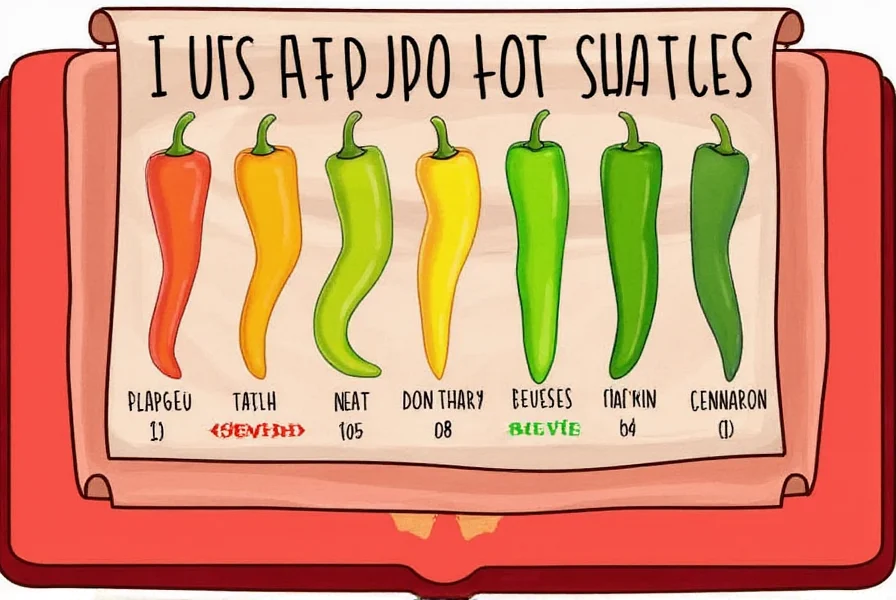
- Features: Small, blackish seeds; packaged securely
- Advantages: Grow your own ultra-hot peppers
- Use Cases: Gardening, seed exchanges, competitive planting
- Target Audience: Gardeners, chili growers, novelty seekers
- Best Occasion: Summer gardening projects, gift giving, personal experiments
Thai Bird's Eye Chilies
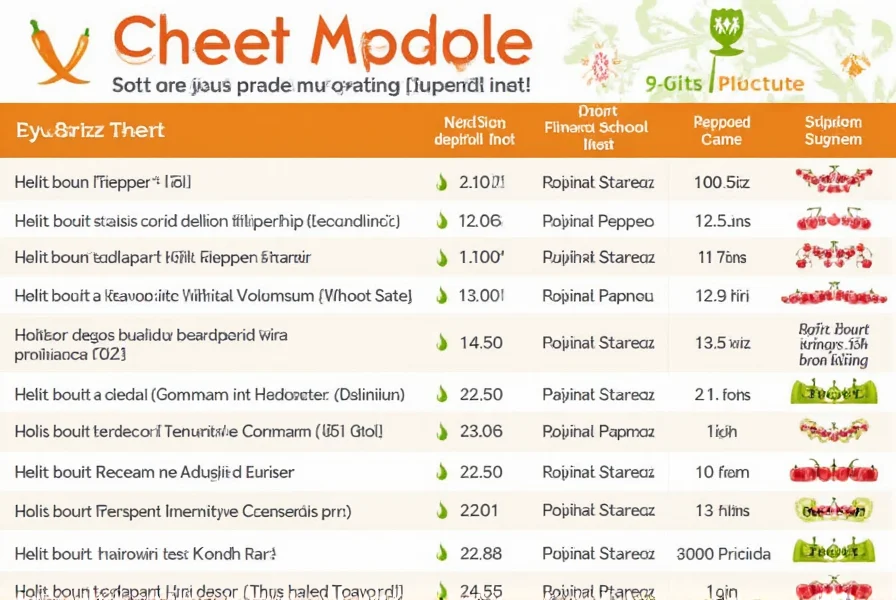
- Features: Bright red or green, firm to the touch
- Advantages: High heat with aromatic punch
- Use Cases: Thai curry pastes, stir-fries, street-style noodles
- Target Audience: Asian cuisine lovers, spice adventurers
- Best Occasion: Authentic Asian meals, solo spice sessions, cooking challenges
Frequently Asked Questions
What is the mildest pepper on the peppers heat chart?
The mildest pepper is the bell pepper, with 0 SHU. No capsaicin, all flavor.
Can I substitute one pepper for another in a recipe?
Absolutely! Just check the Scoville units and swap within a similar range. For example, serranos can replace jalapeños, and poblano peppers can stand in for anaheim chiles. Keep in mind that flavor profiles differ too—habaneros have a fruity note while cayenne is more earthy.
Are green peppers less hot than red ones?
Often yes! Green peppers are usually immature versions of the same plant. As they ripen, they turn red, orange, or yellow and become hotter and sweeter. For example, a green jalapeño is milder than its red counterpart.
What does a Scoville rating of 1,000,000 mean?
That means the pepper has been diluted one million times before losing its heat. In short: it's nuclear. To put it in perspective, you'd need to dilute one drop of liquid from a 1,000,000 SHU pepper in 1,000 liters of water before the heat becomes undetectable.
How do I store fresh peppers?
You can refrigerate fresh peppers in a paper bag for up to two weeks. For longer storage, freeze whole or chopped peppers without blanching. Dried peppers should be stored in airtight containers away from light and heat to maintain potency for up to a year.
How is the Scoville scale measured today?
Originally measured through human taste panels, the Scoville scale is now primarily measured using High-Performance Liquid Chromatography (HPLC), which provides an objective, scientific measurement of capsaicinoids. The HPLC results are then converted to Scoville Heat Units for consumer understanding.
Why do some peppers of the same type vary in heat?
Pepper heat varies due to growing conditions including soil composition, temperature, water stress, and sunlight. Even peppers from the same plant can have different heat levels. This natural variation is why Scoville ranges are given rather than exact numbers.
How can I reduce the heat of a dish that's too spicy?
Add dairy (milk, yogurt, sour cream), acid (lemon juice, vinegar), sugar, or starch (rice, bread). Dairy works best because casein proteins bind with capsaicin. Avoid drinking water, as it spreads the oil-based capsaicin rather than neutralizing it.
What's the current world's hottest pepper?
As of 2023, the Carolina Reaper holds the Guinness World Record for hottest pepper (1,400,000–2,200,000 SHU). However, some newer peppers like Pepper X and Dragon's Breath claim higher heat levels, but these haven't been officially verified through proper testing protocols.
What are the health benefits of eating spicy peppers?
Capsaicin has anti-inflammatory properties, may boost metabolism, can help with pain relief, and is rich in vitamins A and C. Regular consumption has been linked to lower mortality rates in some studies. However, those with sensitive stomachs or certain medical conditions should consume spicy foods with caution.
How does capsaicin affect the body?
Capsaicin triggers pain receptors (TRPV1) that normally respond to heat, creating the burning sensation. This triggers endorphin release, which can create a "spice high." It also increases heart rate and can cause sweating as your body tries to cool down from the perceived heat.
What's the difference between heat level ratings and Scoville units?
Scoville units provide a scientific measurement of capsaicin concentration, while heat level ratings (mild, medium, hot, etc.) are subjective consumer labels. Two peppers with the same Scoville rating might feel differently hot due to varying capsaicinoid profiles and individual tolerance.











 浙公网安备
33010002000092号
浙公网安备
33010002000092号 浙B2-20120091-4
浙B2-20120091-4